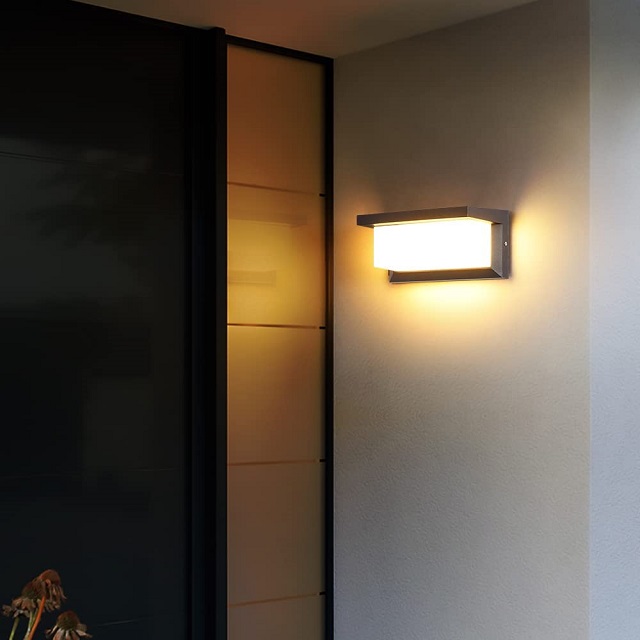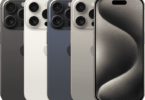You have definitely seen buzzing of bugs in a group around an outdoor light. We can say that light sources attract them, but specifically, what actually is it about light that attracts them? Is there anything that can fix the problem? While no amount of spray, citronella, or bug zappers can’t eliminate them completely, several ways exist through which less of them can be attracted. LED lights can decrease the existence of bugs than other light sources. However, these lights can’t transform an outdoor area into a bug-free zone.
Do LED Lights Attract Bugs?
However, several studies and researches have been done regarding the correlation between lighting and the presence of bugs. In a research paper which is titled as Insect Vision: Ultraviolet, Color and LED light; Marianne Shockley Cruz and Rebecca Linder from the University of Georgia’s Entomology department wrote that as per several experimental works a color perception exists in insects and they mainly response to the UV lights’ and visible spectrum’s shorter wavelengths.
Nanometers are used to measure wavelengths. Shorter light wavelengths (less than 550 nanometers) indicate ultraviolet (UV), blue, or green colors. Bugs like mosquitoes are attracted to heat. They have thermal receptors that help them to find it. So, let’s know why bugs flock to specific light sources.
Wavelengths and Color Temperature:
The color emitted from a light source is very important due to its attracting ability of bugs. Compared to the longer wavelengths (yellow, orange, and red light), bugs can see the shorter wavelengths (UV, blue, and green light) more. That’s why they get attracted to these lights more. Bugs attract UV radiation, which Incandescent, compact fluorescent (CFL), halogen, and high-intensity discharge (HID) lights emit, is very much attractive to bugs. LEDs can produce very little to no UV light, due to which these become less visible to bugs.
However, a LED lamp can produce shorter wavelengths of light (bluish-white/cool white color), because of which more bugs are attracted. That’s why if you want to buy bug-resistant LED lights, you need to select such a bulb or fixture which can emit lights with wavelengths above 550 nanometers, like warm white, ultra warm white, or yellow lights.
Sometimes, LED bulbs list CCT or correlated color temperature rather than nanometers. Therefore, it becomes easy to say if it is more or less visible to bugs. Kelvin is used for measuring CCT, where different temperatures on this kelvin scale indicate different colors. If a LED lamp with a CCT below 3600K, it will emit warm or ultra-warm white light, bugs can not see it. Bulbs with CCTs of 3600K and more emit cool white light, which can attract bugs.
Instead of any particular kind of light bulb, bugs get attracted to a color spectrum. According to a study made by the Department of Entomology, rather than a particular light bulb, different color spectrums in light attracted bugs. The study said that 22% of bugs are attracted by the blue spectrum, the white light attracted 18%, while the yellow one attracted 10%, red 2% and the green spectrum attracted 4.7% of bugs.
Heat:
Incandescent, halogen, CFL, and HID bulbs waste 90% of their consumed energy as a form of heat. The thermal receptors of bugs help them to sense the heat released by the light sources. You can use LED bulbs as these create less amount of heat, as a result, these lights become less appealing to bugs.
LED Bug Lights and Warm-Colored LED lights:
LED bug lights refer to light bulbs that come with a yellow coating used to reduce the color temperature of emitted light. Due to the presence of coating, these bulbs emit around 550-600 nanometers of the wavelength of light. Remember that these yellow-coated bulbs are not the only lights that decrease bugs’ presence. You can use such LED lights that emit warm colored illumination like yellow strip lights, yellow malibu light bulbs for landscape work, or gold-tint filament bulbs. These let you create an area that is less likely to attract bugs.
What about Yellow Light?
You can see a few lights are marketed as bug-repellent lights, but it is wrong. No light spectrum can kill bugs or make them go away. In this regard, you should know that the yellow light spectrum is not the most attractive color in bugs’ eyes. It is why a lot of bugs are not seen around these lights. However, it never makes a yellow light spectrum bug repellent. We can say that these yellow lights attract fewer bugs than black or blue, or others. Therefore, yellow lighting is a better option than white or blue. In addition, it is better to use yellow lights as they comfort human eyes.
What Are The Best Lights To Repel Bugs?
There is no specific light that is made for repelling bugs. That means no matter what color of light you are installing in your home, it will attract the insects. So, what should you do now? Choose the light which is the least attractive to insects. Insects get attracted to cool colors like blue and black. Try to use the warmer color LED lights to keep insects or bugs away from your home.
What Light Color Spectrum Attracts Insects?
If you want to find the right light for your personal usages that is capable of keeping the bugs away, you need to understand which light color attracts most of the bugs. PARS (Punjab Agriculture Research Station) experts have done an experiment by dividing the farm into some sections and installing various colored lights. After that, most bugs were caught for counting to know which color spectrum attracted the most insects. When the experiment was completed, they saw that Black (ultraviolet) light is more attractive to insects. Then, the bugs were caught around the Blue lights, followed up by White, Yellow, Green and Red.
Conclusion:
You should know that LED lights can be preferable for insects. Compared to their incandescent or ultraviolet counterparts, LED lights are much cooler. Therefore, if any bug wants to hang around the light, it won’t get burned up. It might happen that the light will attract more bugs in the future. You should know that it will happen only when you leave the light exposed to the outdoor elements. Bugs are attracted by the light that LED lights emit. But we must not say that LED bulbs attract more bugs than others. In this article, we have elaborated on “do led lights attract bugs”. Still if you have any doubts, let us know via comments.
Frequently Asked Question:
- How do you keep LED strips from attracting bugs?
You should know that yellow-coated bulbs are not only the lights that can decrease the bugs’ presence. You can use yellow strip lights, yellow malibu light bulbs for landscape applications, or gold-tint filament bulbs that emit warm colored illumination and attract less bugs.
- Do LED lights attract spiders?
There is a very simple relationship between LEDs and spiders. You should know that spiders prefer eating bugs and insects. Therefore, if the LED light is of such a spectrum, which attracts insects that the spider prefers eating, you will attract spiders also.
- What color do LED lights not attract bugs?
Ultraviolet (UV), blue and green colors are seen by bugs. It is why white or bluish lights like mercury vapor, white incandescent, and white fluorescent attract bugs. On the flip side, bugs are less attractive to these following colors: yellowish, pinkish, or orange.







